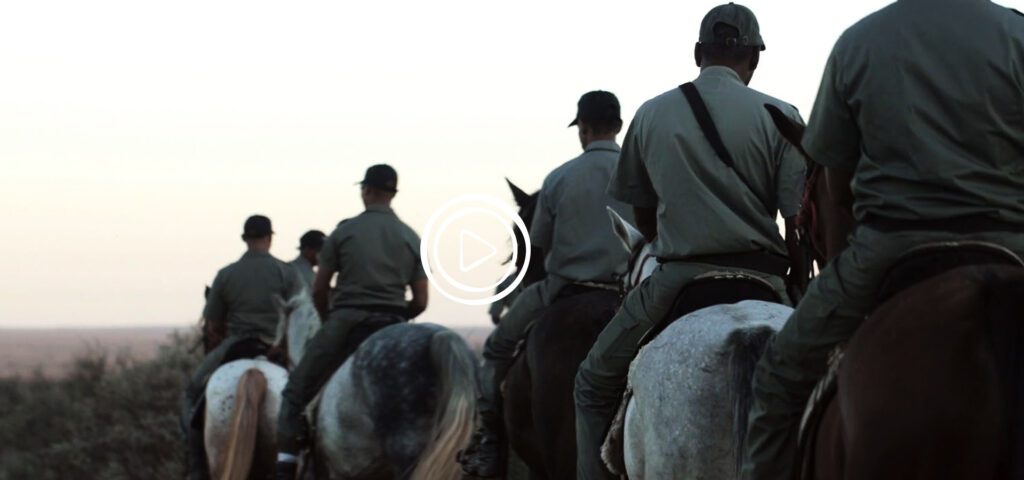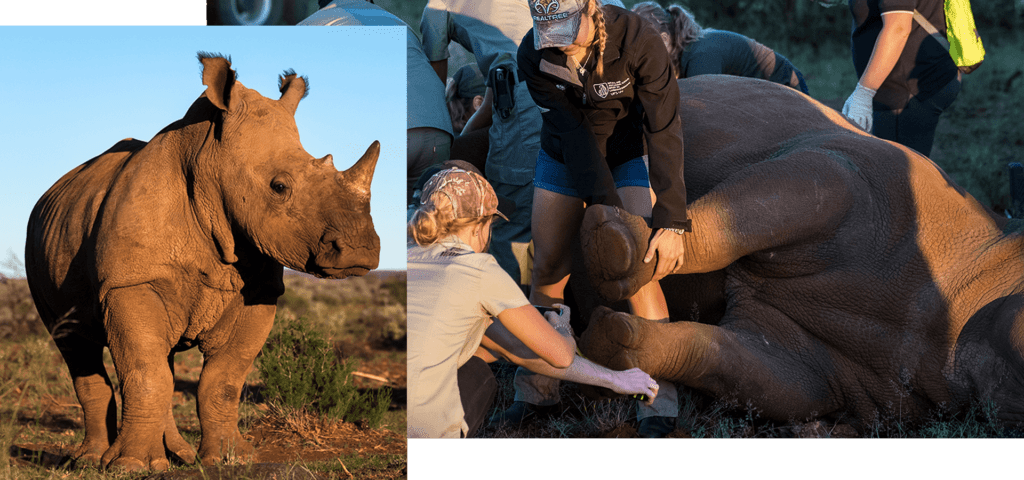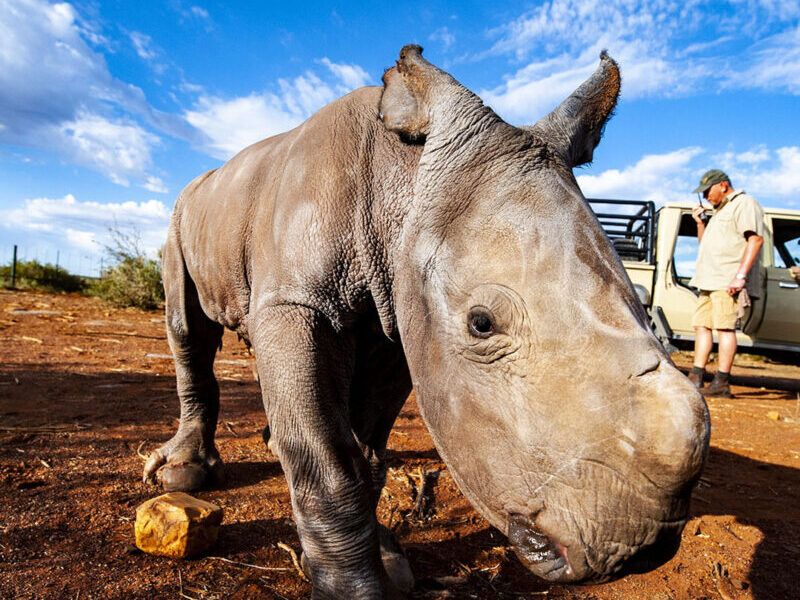Charitable giving is one way people choose to support a specific cause each year. Millions of dollars are collected for wildlife conservation. People donate generously with the belief they’re helping to protect rhinos and other vulnerable species.
But the reality is, only a fraction of the money raised actually goes to the protection of wildlife.
Most of the money donated is used to raise even more money. The old saying, you need to spend money to make money applies even to NGOs. Most of the funds end up reinvested in an endless cycle of money-raising campaigns. Plus, administration costs, overheads and salaries associated with running a large, international organization come from somewhere.
Whatever amount does end up caring for, and protecting animals on the endangered list simply isn’t enough. These organizations haven’t succeeded yet, and probably never will. They’re not incentivised to be truly effective in the fight to save a species, like the rhino. Otherwise they would be out of business.
It’s about time we changed tactics. Doing the same thing expecting different results is the very definition of madness.
Watch to find out how we spend our funds to help save the rhino.

KNOW THE NGO (RESEARCH THE CHARITIES)
We’re not here to tell you, you’re throwing your hard-earned money away if you donate to other wildlife organizations. There are plenty of passionate people out there with their hearts in the right place. If you really are committed to the fight to save the rhino and other species from a similar fate, you need to be thorough in your research.
There are a number of ways Rockwood has set up so anyone, no matter where they are in the world, can join the fight to save the African rhino. The simplest way is to spread the word of what we’re doing at Rockwood.
CARING FOR RHINO IS NO SMALL TASK
At Rockwood, we’re willing to do whatever it takes to ensure rhinos are around in the future – that’s why we’ve implemented what we refer to as “aggressive conservation”.
For the sake of our rhinos continued survival we keep them in three different camps at night with guards keeping a close eye. During the day, as they roam in the veld, rangers keep a lookout by following them on foot or on horseback.
While it’s a far cry from how they would live in the wild, free from human interference, it’s their best chance in our current climate. So far, the strategy has proven to be highly successful. It’s certainly working better than most other approaches being used today.
We recently celebrated our 100th rhino birth at Rockwood. Taking our total rhino population to over 300. Making Rockwood one of the world’s largest and most successful rhino conservation projects, but success doesn’t come cheap.

“DNA [Profiling] can be used to track where the horn came from, and can help build a criminal case against poachers and illegal black market dealers.”
HERE’S WHERE OUR MONEY GOES TO SAVE THE RHINO:
SECURITY & FENCING
Our multi-camp system means that the rhinos are surrounded by over a hundred miles of electric fencing. There are also ranger towers, outposts, horseback patrols, drones and infra-red security cameras to monitor and protect our rhinos 24/7. All of which requires maintenance that is made more costly due to our remoteness.
FEED
Rockwood is situated between the Great Karoo and Kalahari Deserts. As you can imagine, it’s an arid, semi-desert most of the year. The area may seem inhospitable, but it’s hard to deny it’s unspoiled beauty.
The location’s remoteness works in favour in terms of safety and security. But with over 400 rhinos and all the other wildlife under Rockwood’s care, we have to truck feed in during the scarcer months. Tons of feed is brought in to maintain our wildlife population.
In recent years, this has become even more crucial with devastating droughts and prolonged dry seasons leaving insufficient natural grazing.
VETERINARY AID
Our secluded location also means vets have to be flown in by chopper for routine health checks on rhinos or if there is ever an emergency. A vet is also on-site whenever research scientists and their students visit to gather samples and stats on the rhino’s health.
Performing health checks and collecting research samples takes a huge team to pull off successfully. Rhinos can weigh up to two tons, so for their safety and ours, they’re sedated using specialized darting kits. The drugs and actual dart kit are one of our biggest expenses.
DNA PROFILING
In South Africa, it’s legally required that every rhino must be DNA profiled. This is for a number of reasons, the most important being that if a rhino is ever poached, DNA can be used to track where the horn came from and can help build a criminal case against poachers and the illegal black market dealers.
DNA is also useful in ensuring the genetic diversity of the entire population. Back in the 1970s rhinos were all but wiped out, but we managed to bring them back from only a few hundred animals. It was a major triumph for conservationists, but still has the possibility of a genetic bottleneck. Reduced genetic diversity leaves any species vulnerable to disease, inbreeding and ultimately, extinction.
RESEARCH
Despite rhinos being an iconic species, not much is known about these mega-fauna. Rockwood works closely with universities and research scientists from all over the world to expand our knowledge of wildlife, and rhinos specifically.
Rhinos have no natural predators. They’re considered an umbrella species because so many other animals in their habitat rely on their presence. Rhinos only graze on certain types of grass, making room for other types of plant life which other herbivores like zebra and antelope rely on. The smaller herbivores are prey so indirectly, predators rely on a herbivore they can never hunt for their next meal.
Even smaller predators like the black-footed wild cat, one of the smallest African cats, that hunt insects, rodents, birds and reptiles rely on the rhino. Without these animals to keep the grass in check, it would overgrow and hamper the ferocious felines hunting, making it impossible to survive.
Without research, we would never know these two completely different species are so intimately linked.
LEARNING CENTRES
We’re in the process of putting up learning centres where visitors can share in the experience of saving the rhino and walk away with more than just a good feeling.
At Rockwood, we believe that the more we know, and the more people that know about rhino the better we can protect them, the species and environment that rely on them.
Please keep our mission alive by spreading the word about what a few private individuals are doing at Rockwood.

